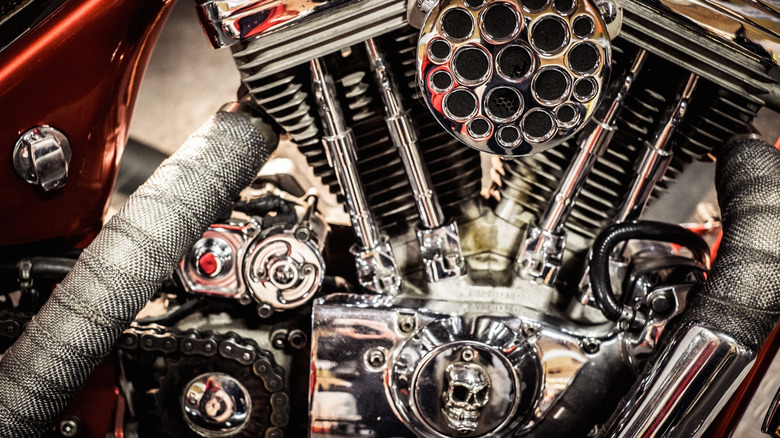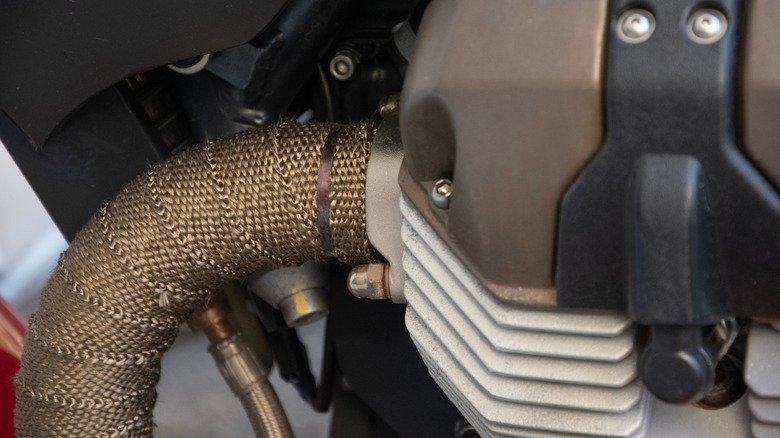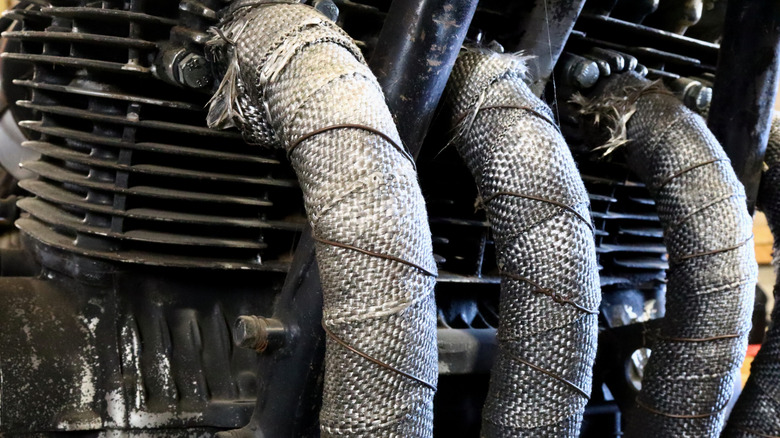Why Do People Wrap Motorcycle Exhaust Pipes?
If there's one thing most bikes need besides maintenance, it's customisation that allows motorcycle enthusiasts to express their individuality and style. In fact, nothing helps to reinvigorate a biker's love for their ride like new modifications. Whether through full-on mechanical changes, or simple visual touch-ups like engraving the bike's body with a metallic tattoo. Sure, there are many ways riders can customize their motorcycles, but most of them are not cheap. For this reason, many riders have turned to DIY modification options that offer both flair and function, and the most common is wrapping the exhaust pipes.
Motorcycle exhaust wraps are a common sight among cruiser bikes, but you might have also seen them on standard bikes. They usually give bikes gritty, track-ready looks, but they also serve a functional purpose, especially when it comes to heat protection.
After all, how often have you accidentally brushed against an exposed exhaust pipe or scorched your ankle hopping off the bike? With an exhaust wrap, which is usually fiberglass-based, you can protect your legs from accidental burns, as the wrap will contain the heat generated by the exhaust system.
Conversely, the heat contained in the exhaust will improve airflow, which will boost the engine's performance slightly. What's more, if you want to make your motorcycle exhaust quieter, these wraps will help. They are made of fiberglass, which can absorb sound waves and prevent sound from transferring through the pipes. At a glance, wrapping an exhaust pipe might seem like an exhausting job left for the pros. However, it's an easy DIY project that beginners can tackle — if they know the right steps.
How to wrap your exhaust pipes
Before you engage in this DIY, you must know that there are various types of exhaust wraps on the market, so be sure to buy what fits your needs. For instance, fiberglass options are ideal if you want something affordable, yet good at resisting heat. If you want a premium option, you can get titanium and stainless-steel wraps that offer better heat resistance and a unique metallic appearance.
To install an exhaust wrap, start by preparing the exhaust system by taking it off the bike, and then scrubbing it with a degreaser. You don't want to install a wrap over rust or grime, as they will compromise the wrap's grip. Next, soak the wrap in water for about 15 minutes to soften the material and ensure a tight grip. This step is mandatory only if you're using fiberglass. Otherwise, skip this step if you're using a titanium or stainless steel wrap. Next, begin wrapping the pipe, starting at the exhaust port and working toward the muffler. Remember to secure each wrap with a zip tie or a hose clamp.
Additionally, make sure that each overlap layer is about ¼ to ½ inch to ensure full coverage. You also want to keep the wrap tight, but don't go overboard to avoid damaging the fibers. If you encounter a bracket or a bolt, wrap it in an X shape and continue with your pattern. Once you reach the muffler, secure the ends and double-check the layers, ensuring they're tight.
You should also trim the excess zip ties or hose clamps so nothing rattles or dangles. Now, reattach the exhaust system, fire up your engine the next morning, and let it idle for approximately 15 minutes. At first, you'll see some smoke coming from the wraps. Don't panic, that's just the wrap curing from the heat.
Drawbacks of exhaust wraps
Sure, titanium or fiberglass wraps might look cool on your motorcycle, but before you go ahead and equip your bike's exhaust with these wraps, you should know that there are a few trade-offs worth considering. One downside of these wraps is their moisture retention. Exhaust wraps — especially fiberglass wraps — are porous in nature. If you wash your bike often, or fail to store your motorcycle properly during winter, the wraps will trap moisture, and this will lead to rust — particularly if your pipes aren't ceramic coated. Nevertheless, you shouldn't worry if you're a frequent rider, as the heat contained by the wrap will evaporate the water.
Besides the heat damage, heat retention might sometimes work against you. This is particularly true for those drivers who use cheap exhaust systems, or even exhausts with thin-walled pipes. In this case, the prolonged intense heat will affect the pipes, leading to metal fatigue. If not addressed, it will result in warping, cracking, or even premature failure.
Lastly, while wraps will give your bike a rugged, custom aesthetic, the fun won't last long. Between harsh weather, contraction from heat cycles, and flying road debris, these wraps might give your pipes a tattered appearance.


